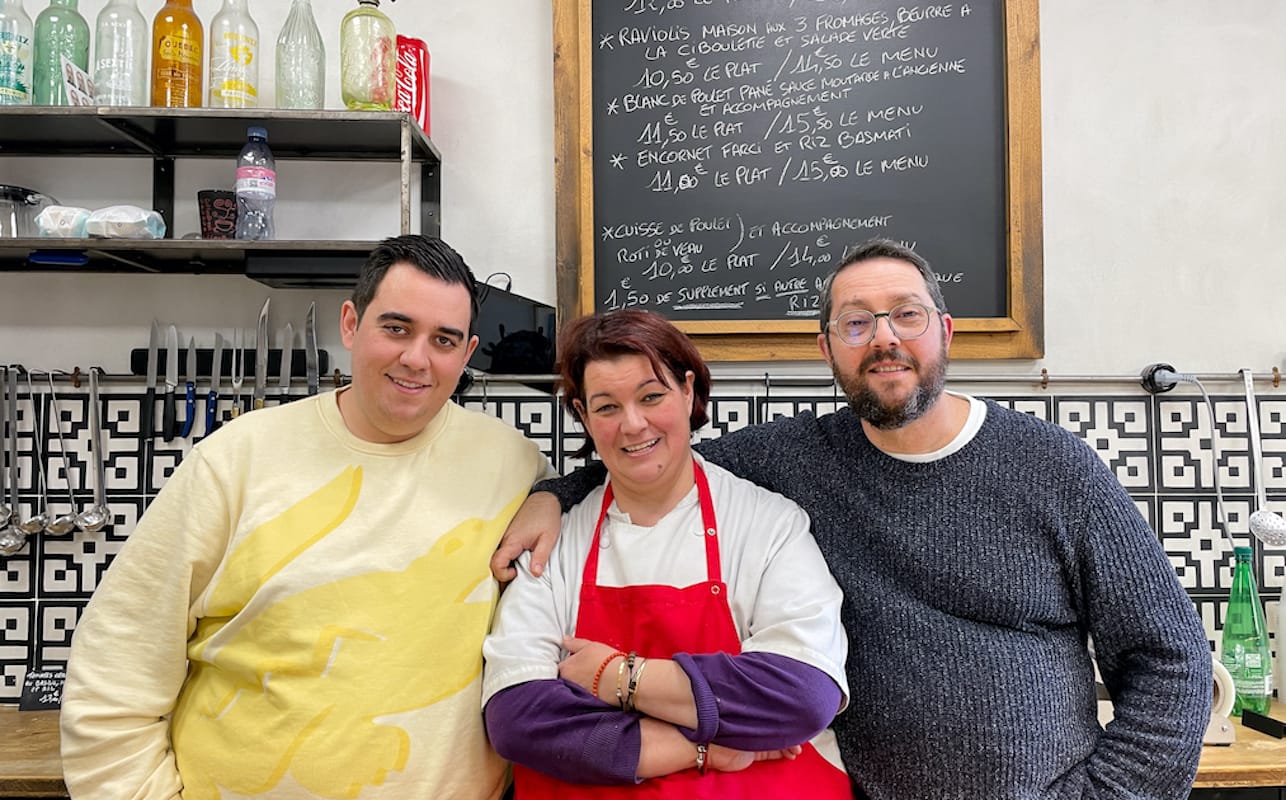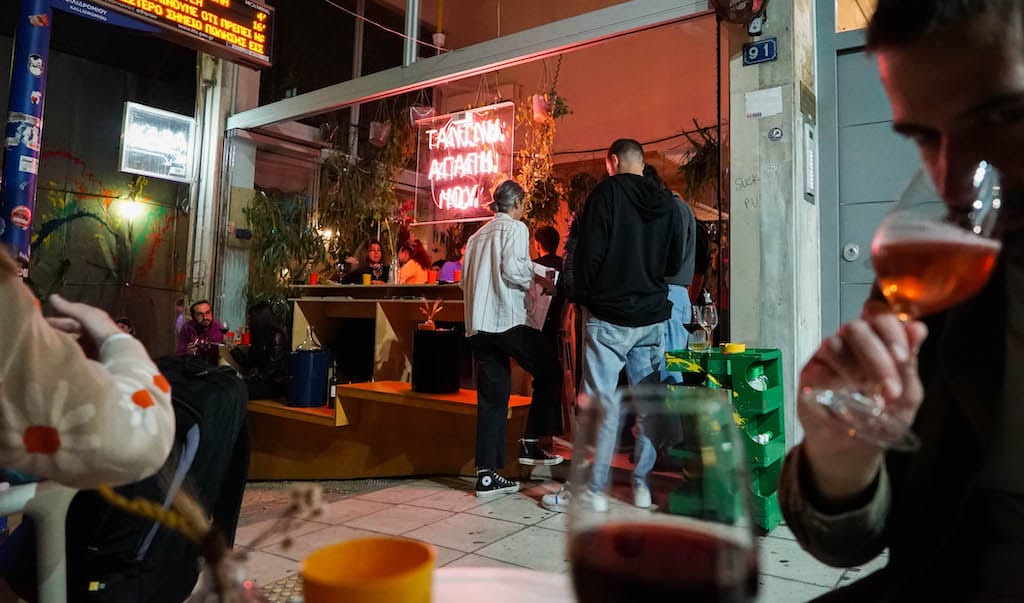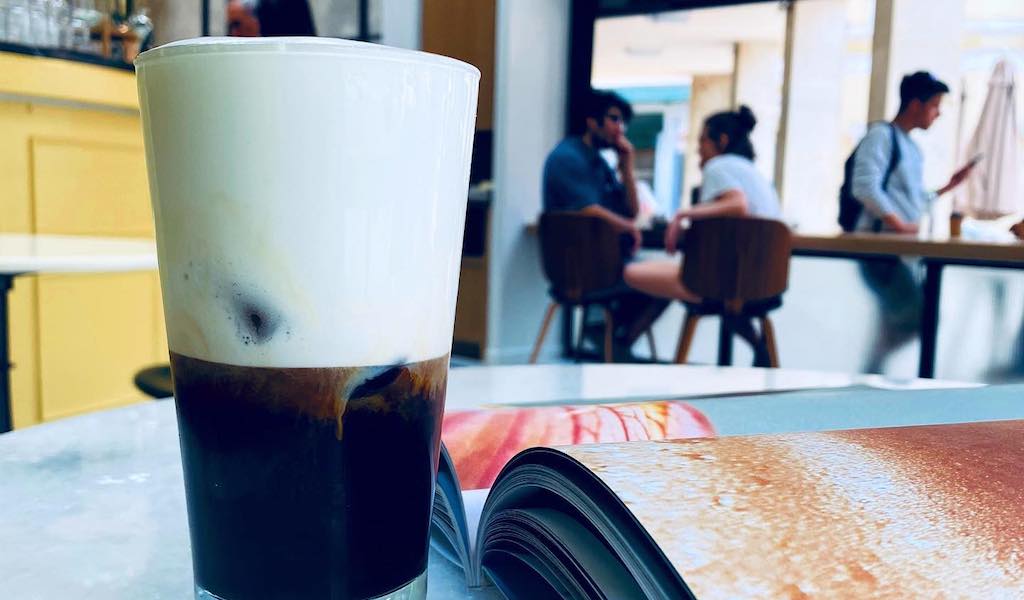Prior to the popularity of French bouillon restaurants in Paris in the mid 1800s, (restaurants that served a simple piece of meat in a soup stock for a good price) there was the French traiteur. A precursor to the restaurant as we know it, a traiteur (the word can roughly be translated as “caterer”) offers prepared meals to go. During the 18th century, many city dwellers did not have kitchens in their homes, so the traiteur was paramount to everyday life in French culture. Today, there are over 10,000 traiteurs serving the French population.
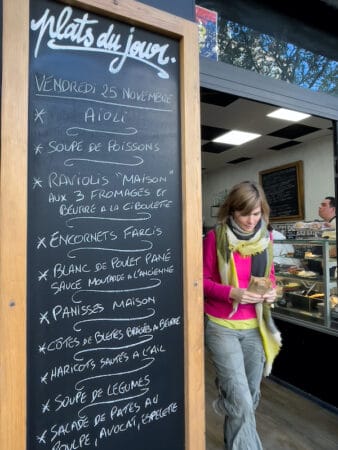
The traiteur, then, is French takeout, but immeasurably better. Typically, there is no seating on the premises of a traiteur, but occasionally there may be a few tables. The window displays showcasing the various dishes are a source of pride for the owner or chef and serve to lure passersby at lunch time. There are daily selections of main dishes, side dishes and desserts. People visit these shops for lunch or dinner and take the meals home to eat with family or friends. Why shop and cook at home when you can get a delicious gratin or a yummy aïoli from the traiteur?
Here in Marseille, there are traiteurs all over the city, in every quartier. One of our favorites is Comme à la Maison, and as its moniker suggests, their dishes taste like home – a warm and cozy home, at that. A family-owned business, the shop’s Martine and Daniel Dessegno, along with their son Quentin, serve traditional French dishes every day except Sunday. The Dessegnos both come from families Marseillaises, along with a bit of Corsican and Savoyard in the family bloodline.
The Dessegno’s initial meeting was thorny. The couple met while working at a summer camp for kids and were not keen on one another. Paired up to work together, fate intervened and little by little, the thorns begat roses and the two fell in love. That was thirty years ago.
We are loyal patrons of the shop and recently stopped by to pick up lunch and have a chat with the couple. Martine shared the story of Comme à la Maison: the two already owned a store just across the street from the established traiteur. They knew the owner and one day he came by and said, “I’m selling, are you interested?” They sold their store and bought Comme à la Maison. After renovating, creating a small dining room and moving the kitchen to the back, they opened in 2011. “We kept the name,” they told us. “It was already a name that we loved.”
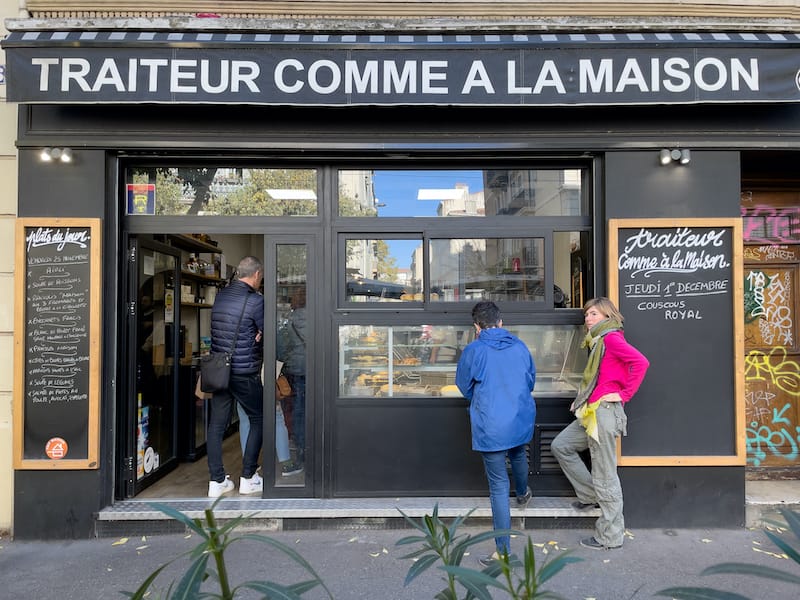
Martine’s parents owned a restaurant-bar in Marseilles, so she grew up in the business. From an early age, she had the experience of dining out and the culture of French cuisine. She tells us that she was not formally trained, but self-taught. Daniel’s parents owned a shop where he learned the importance of customer service. “Our passion led us to the food industry. It’s been a passion for many years. We love business. We love being connected with customers. His parents were shop owners. My parents were shop owners. So we grew up in that world,” Martine says.
The day we visit, Martine and Daniel are serving a Marseillaise specialty and a personal favorite, encornet farcis (stuffed squid). Known locally as totènes farcis, the squid is stuffed with white rice, ground sausage, the tentacles and the head of the squid, green chard, and garlic. Martine tells us that she cooks her recipe for a long time in the oven – all night at 120 degrees Celsius. “That way, they become tender, melting. Slow cooking is very important to me. If you don’t do that, the squid can be tough.” The dish is then served over white rice with tomato sauce.

Martine tells us she has culinary influences from other countries in the Mediterranean, but says her recipes are traditional at their core. “The base of my cooking is French. I am aware of other influences, but my roots are always of a traditional French base. We are here to bring a little bit of Italy, a little bit of France, a bit of Spain, a little bit of everything. Les plats mijotés (simmered dishes) are my favorite. I learned to cook to mijoté from my grandmother. I make sauces from the juices of the meat. I did not learn in the same way as famous chefs. I cook slowly, like a grandmother.”
The roles at Comme à la Maison are defined and we can see that the couple operate as a well-oiled machine. Martine oversees the kitchen, where she has two apprentices and one dishwasher. Daniel manages the front with Quentin’s help, greeting customers and assisting them with their selections. It all works seamlessly and while we are there, customers come and go, many greeted by name. Martine and Daniel tell us that the idea of the traiteur is to provide a meal to take home and share, so that people don’t have to cook at home. Their customers appreciate the classically French flavors of Martine’s recipes. It also helps to save money because instead of buying a lot of ingredients, customers can just buy a portioned serving. Most of their patrons take food to go, but some prefer to sit and eat in the small dining room.
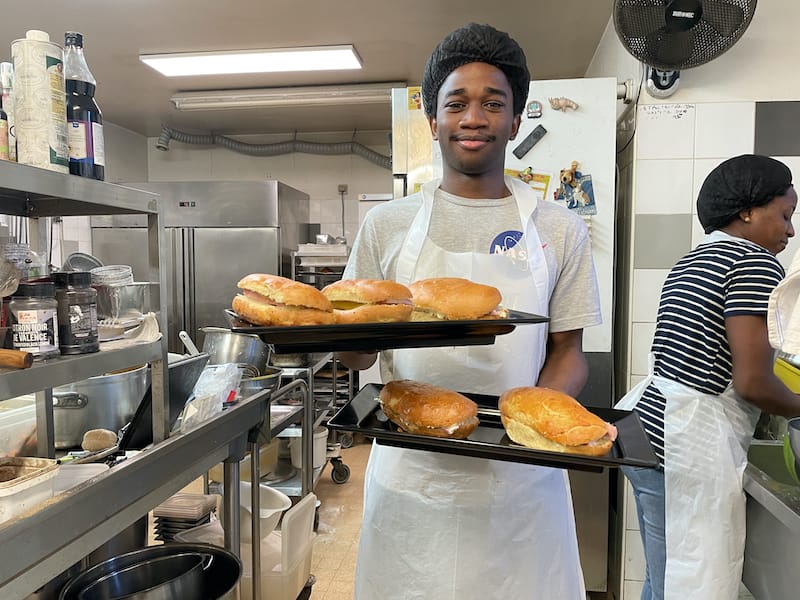
There are a variety of menu items on this day and Martine tells us some of her favorites. “In Marseille, we eat everything from the sea. We have the freshest fish and grilled fish is the best.” She also mentions she really likes encornet farcis, octopus daube (her recipe is from the Carmargue), aïoli, and pieds paquets.
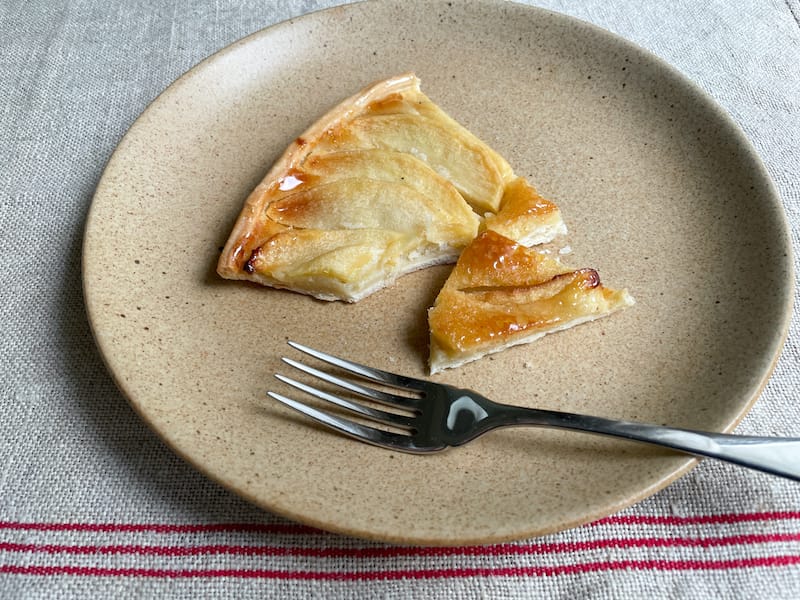
A Marseillaise specialty, pieds paquets (tripe and trotters) is made by stewing lamb’s feet, used to flavor and thicken the sauce, along with lamb tripe that is stuffed with garlic, parsley and lardon. It all gets slow cooked with tomatoes and white wine overnight. After stewing, the meat falls off the bone and the stuffed tripe is served with the sauce as the finished dish. “It takes a while to roll each paquet one by one,” Martine says. “Then you cook it all night and the entire neighborhood can smell it! In the morning, you have a delicious, comforting meal. This is my favorite childhood memory.”
The shop soon began to get crowded during our recent visit. We selected the encornet farcis, l’enchine de porc, carrot pureé, gratin dauphinois and for dessert, tarte aux pommes. We see a lot of young people coming in from school. There are workers from the neighborhood, an elderly man with a relative. Martine tells us, “They could go to a fast food spot or get a sandwich, but they prefer a hot plate. France is the only country, [along with] with Italy, where people take the time to have lunch between noon and 2 p.m. In many countries, people don’t do that anymore. They eat very fast. It’s very important in France to have a pleasant, leisurely lunch.”
And with that, it’s time to eat.
 February 28, 2024 Game On
February 28, 2024 Game On
Editor’s Note: This is the first installment in a new recurring feature, "Game On", […] Posted in Marseille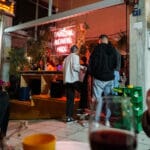 December 5, 2023 Tanini Agapi Mou: The People’s Wine Bar
December 5, 2023 Tanini Agapi Mou: The People’s Wine Bar
Tanini Agapi Mou may be one of the most ambitious wine bars in Athens’s growing wine […] Posted in Athens July 25, 2023 Liquid Assets
July 25, 2023 Liquid Assets
It was August 31, 1957, and Yiannis Dritsas, a representative of Nestlé Greece, was at […] Posted in Athens
Published on January 11, 2023
Related stories
February 28, 2024
MarseilleEditor’s Note: This is the first installment in a new recurring feature, "Game On", which shares insight on some of the best spots to watch local teams play – outside of the stadium. In Marseille, OM is not a yogic hum but a deafening roar. Revered like a religion, it refers to Olympique de Marseille,…
December 5, 2023
Athens | By Katherine Whittaker
AthensTanini Agapi Mou may be one of the most ambitious wine bars in Athens’s growing wine scene. But nothing about it feels pretentious. Plants hang from the ceiling and windows, growing wildly and draping the store in green. The furniture is simple, with tables crafted by independent producers out of highly-sustainable birchwood. The music that…
July 25, 2023
AthensIt was August 31, 1957, and Yiannis Dritsas, a representative of Nestlé Greece, was at the 22nd Thessaloniki International Fair. His mission? To present a new iced chocolate drink for kids. It was simple, really: add milk and cocoa powder to a shaker (essentially a cocktail shaker), shake well and serve. During a break, an…







































